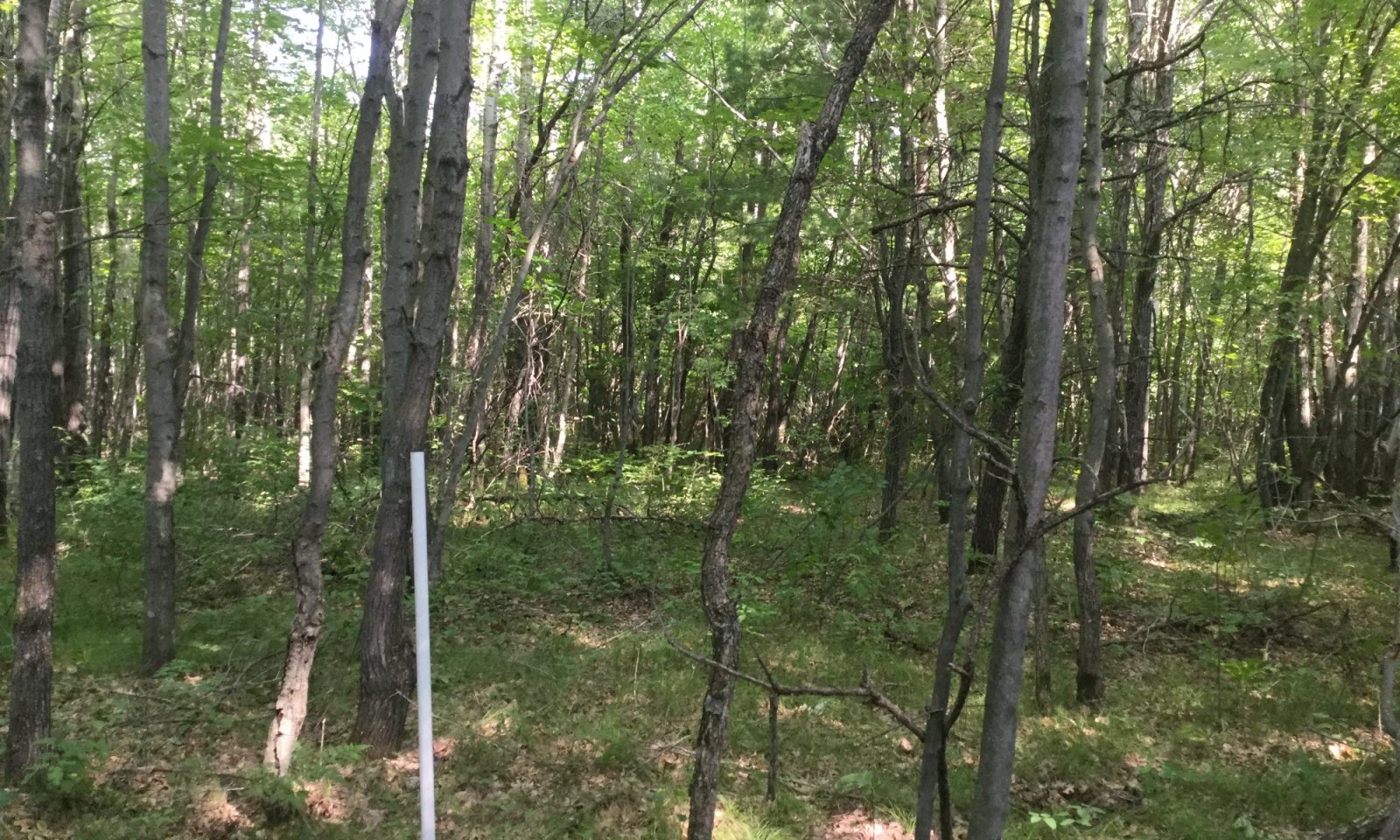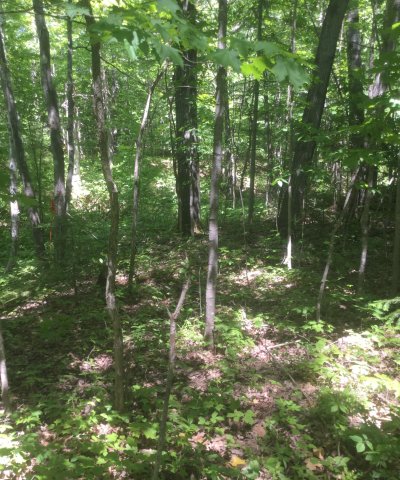

Natural Resources
Conservation Service
Ecological site F091XY013WI
Clayey Upland
Last updated: 9/27/2023
Accessed: 03/14/2025
General information
Provisional. A provisional ecological site description has undergone quality control and quality assurance review. It contains a working state and transition model and enough information to identify the ecological site.
MLRA notes
Major Land Resource Area (MLRA): 091X–Wisconsin and Minnesota Sandy Outwash
The Wisconsin and Minnesota Sandy Outwash MLRA is the most extensive glacial outwash system in the northern half of Wisconsin. The total land area of the Wisconsin portion is just under 1.4 million acres (2,170 sq miles). The northern half is a former spillway for Glacial Lake Duluth. The flowing meltwater from the draining lake has left behind thick deposits of drift and carved a terraced river valley now occupied by the St. Croix and Bois Brule Rivers.
The northeastern section – the Bayfield hills – is a collapsed outwash plain where drift deposits are thick. Lacustrine materials from Glacial Lake Duluth line the northeastern tip. Moving southwest, the landscape transitions into a large pitted outwash plain. This is an area of extensive kettle holes, and, where the underlying till is less permeable, kettle lakes with some interspersed morainic hills and ridges. The glacial drift deposits are thinner in the southwestern section, although there is still no documented surface bedrock within this MLRA.
The St. Croix and Bois Brule rivers share a channel that lines much of the northwestern border of this MLRA. In some places, the underlying reddish-brown sandy loam till of the Copper Falls Formation is exposed along cut riverbanks, though most of it is covered by a mantle of outwash. Glacial lakes deposited pockets of fine-textured lacustrine materials, most of which were washed away or buried by glacial outwash and meltwater flowing through the channel. East of the channel, some of the silty and clayey lakebed deposits are found near the surface, where they impede drainage and contribute to the formation of extensive wetlands.
Historically, the area supported extensive jack pine (Pinus banksiana), scrub, and oak forests and barrens. The northern portion also supported stands of red pine (Pinus resinosa) and eastern white pine (Pinus strobus) as well. Marsh and sedge meadow, wet prairies, and lowland shrubs dominated the extensive wetland complexes in the southern tip of this MLRA (Finley, R., 1976).
Classification relationships
Relationship to Established Framework and Classification Systems:
Biophysical Settings (Landfire, 2014): This ES is largely mapped as Laurentian-Acadian Northern Hardwoods Forest, Laurentian-Acadian Northern Pine Forest, Eastern Cool Temperate Pasture and Hayland, and Eastern Cool Temperate Row Crop
Habitat Types of N. Wisconsin (Kotar, 2002): The sites of this ES keyed out to three habitat types: Acer saccharum/Athyrium-Rubus pubescens (AAtRp); Acer saccharum/Clintonia (ACl); Pinus strobus-Quercus/Gaultheria-Ceanothus (PQGCe)
WDNR Natural Communities (WDNR, 2015): This ES is most similar to the Northern Mesic Forest community.
Hierarchical Framework Relationships:
Major Land Resource Area (MLRA): Wisconsin and Minnesota Sandy Outwash (91X)
USFS Subregions: Bayfield Sand Plains (212Ka)
Small sections occur in the Mille Lacs Uplands (212Kb) subregion
Wisconsin DNR Ecological Landscapes: Northwest Sands
Ecological site concept
The Clayey Uplands ecological site is found the southern portion of MLRA 91X on lake and outwash plains. These sites are characterized by very deep, moderately well to well drained soils formed in loamy alluvium or sandy outwash overlying deep clayey lacustrine deposits. Precipitation and runoff from adjacent uplands are the primary sources of water. Soils range from very strongly acid to slightly alkaline.
The parent materials of Clayey Uplands were deposited by old glacial lakes, including Glacial Lake Grantsburg. Rushing meltwater from large, proglacial streams during and after Wisconsin’s more recent glaciation – including one that occupied today’s St. Croix River valley – eroded or capped most of the silty and clayey lacustrine materials from the glacial lakes. Clayey Uplands are found in locations far enough from the river valleys of these old proglacial streams to have not been washed away or thickly-capped.
Based on cumulative ecological indicator values of species present, the site falls into the Dry-Mesic, Nutrient-Medium, category. This condition is reflected by co-occurrence of some species with typically wide range of distribution on the moisture/nutrient gradient, but including the “dry end”, and a small number of those that become more common on the “mesic end” of the gradient. Among the former are bracken fern (Pteridium aquilinum), big-leaf aster (Eurybia macrophylla), serviceberry (Amelanchier spp.) and blueberries (Vaccinium spp.), and among the latter are fly-honeysucke (Lonicera Canadensis), trillium (Trillium spp.) and jack in the pulpit (Arisaema atrorubens). Most tree species have a wide ecological amplitude in regard to soil moisture and nutrient requirements, but they differ more drastically in the degree of shade tolerance. Sugar maple (Acer saccharum) is one of the most shade tolerant native tree species and in the absence of major disturbances it dominates forest communities, to the exclusion of less shade tolerant species, on all sites where its soil moisture and nutrient requirements are met. On this ES sugar maple’s soil moisture requirements are at their minimum. This is significant in terms of community dynamics because the less shade tolerant species, such as white pine, red oak and white oak, grow much faster than does sugar maple on these sites, and they can take advantage of canopy openings to regenerate, even in the presence of the shade tolerant, but slower growing sugar maple.
Clayey Uplands differ from the sandy loamy uplands due to its finer textures. The clayey textures often have higher pH and available water capacity than sandy and loamy materials. The moderately well to well-drained soil differs Clayey Uplands from other clayey sites.
Associated sites
| F091XY006WI |
Wet Clayey Lowland These sites occur on depressions and drainageways on outwash plains and lake plains. They form in clayey lacustrine deposits overlain by sandy lacustrine or sandy outwash deposits. They are subject to some flooding. These are wetland soils. They are wetter and occur lower on the drainage sequence than Clayey Uplands. |
|---|---|
| F091XY008WI |
Moist Clayey Lowland These soils formed in a sandy outwash mantle over clayey lacustrine deposits over sandy lacustrine deposits, or loamy glaciofluvial deposits over clayey lacustrine deposits. Soils are very deep and are somewhat poorly drained. They are wetter and occur lower on the drainage sequence than Clayey Uplands. |
Similar sites
| F091XY012WI |
Loamy Upland These soils formed in loamy lacustrine, loamy alluvium, loamy till, sandy outwash, sandy eolian, or loess deposits. Some sites have underlying lacustrine deposits, till, or basalt bedrock. They are moderately well or well drained. The occupy the same position on the landscape as Clayey Uplands but have coarser particle size classes. |
|---|
Table 1. Dominant plant species
| Tree |
(1) Pinus strobus |
|---|---|
| Shrub |
(1) Acer saccharum |
| Herbaceous |
(1) Pteridium aquilinum |
Click on box and path labels to scroll to the respective text.
Ecosystem states
| T1A | - | Stand replacing disturbance e.g., blow-down and fire, or clear-cutting followed by fire. Regeneration by natural seeding or planting. |
|---|---|---|
| R2A | - | Time, natural succession by white pine and red maple. |
| T2A | - | Grazing by livestock. Disruption of tree regeneration and ground vegetation. |
| T2B | - | Removal of natural vegetation, plowing, fertilizing, irrigating, planting agricultural crops. |
| R3A | - | Removal of livestock from stands. |
| T3A | - | Removal of natural vegetation, plowing, fertilizing, irrigating, planting agricultural crops. |
State 1 submodel, plant communities
| 1.1A | - | Light to moderate intensity fires, reducing or eliminating advance tree regeneration. |
|---|---|---|
| 1.2A | - | White pine and red oak regeneration re-establishes. |
State 2 submodel, plant communities
| 2.1A | - | Red pine seed into the successional communities of mixed oak |
|---|---|---|
| 2.1B | - | Repetitive clearcutting and burning of earlier stands |
| 2.2A | - | Disturbance e.g., blow-down and fire, or clear-cutting followed by fire. Regeneration by natural seeding or planting. |
| 2.3A | - | Time without disturbance, natural succession |


